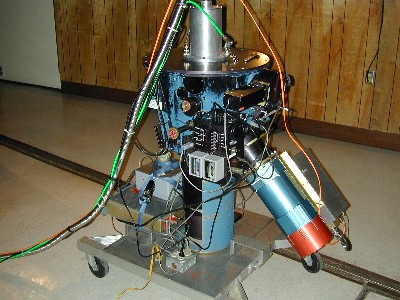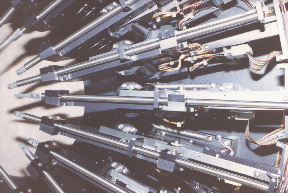or compressed Postscript file 301kB
or LaTeX dvi file114kB
(manual last updated 26JAN00)

001121b.jpg 750kB "B&C Spectrograph mounted on the floor with long fiber cable."

001121c.jpg 726kB
"MX Spectrometer mounted on the telescope with long fiber cable."

991208b.jpg 404kB
"MX Spectrometer mounted on the telescope with long fiber cable."

991208c.jpg 434kB
"B&C Spectrograph mounted on the floor with long fiber cable."

991208e.jpg 385kB
"Fibers seen from below the MX Spectrometer focal plane."

mx01.gif 336kB "MX Spectrometer and B&C Spectrograph mounted on the telescope. (before October 1997)"

mx02.gif 634kB
"J. Hill and B. McClendon assembling 32 robot arms in 1984."

mx03.gif 644kB "Detail of the robot arms and stepper drives."
mxpackage.tar.Z (1880 Kbytes) or mxpackage.tar.gz (1276 Kbytes).
Read the help file for installation instructions. This version works under IRAF version 2.11 (post-Y2K version).
This version compiles under Slackware linux and Redhat linux.
For a tar file including the compiled binaries under Solaris 2.6 with IRAF V2.11, click here:
mxpackage.big211.Z (5217 Kbytes).
The latest update with content to mxpackage was 24FEB01.

